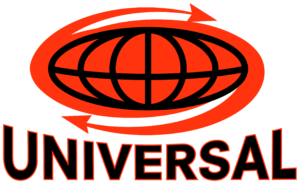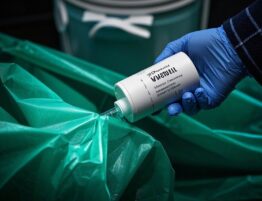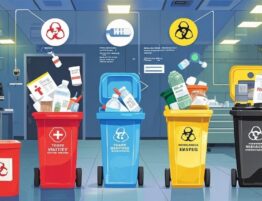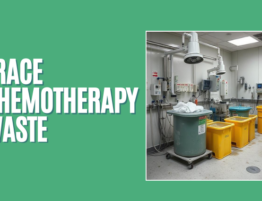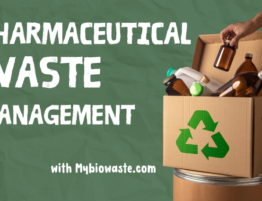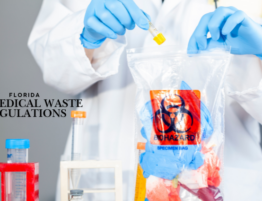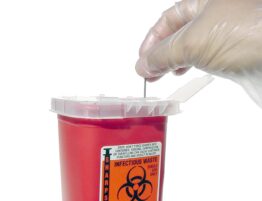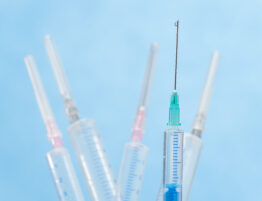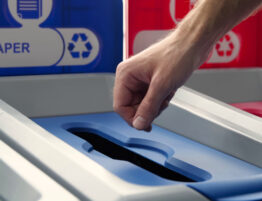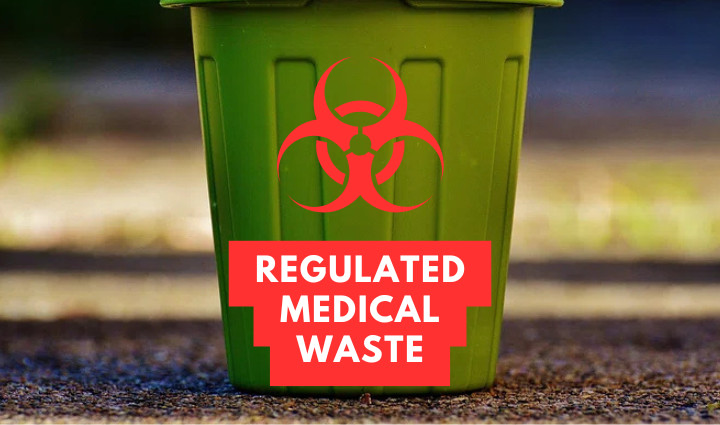
Every day, hospitals, clinics, research labs, and medical offices generate waste that requires special handling. This waste, known as regulated medical waste (RMW), includes items contaminated with blood, bodily fluids, or other potentially infectious materials. If not managed properly, medical waste can pose serious risks to human health and the environment. It can spread infections, contaminate water sources, and harm waste workers. That’s why proper disposal is not just about following the rules, it’s about keeping people safe and protecting our planet.
Regulated medical waste disposal follows strict guidelines to ensure safety. Laws and regulations from agencies like the Occupational Safety and Health Administration (OSHA), the Environmental Protection Agency (EPA), and the Department of Transportation (DOT) set clear rules to prevent harm. By understanding what regulated medical waste is, how to dispose of it, and why it matters, healthcare professionals and facility managers can ensure compliance and build a safer workplace for everyone.
What Is Regulated Medical Waste?
Regulated medical waste includes materials that have been contaminated with infectious substances. These materials can be dangerous if not handled properly, which is why they must be separated from regular trash. Medical waste is divided into several categories, each requiring specific handling and disposal methods.
Types of Regulated Medical Waste:
- Sharps Waste – This includes needles, syringes, scalpels, and broken glass. Anything that can puncture the skin and has been used in a medical setting is considered sharp waste and must be disposed of in puncture-proof containers.
- Infectious Waste – Any material contaminated with blood, bodily fluids, or infectious agents, such as used gauze, gloves, and bandages. This type of waste has a high risk of spreading infections.
- Pathological Waste – This consists of human tissues, organs, and bodily fluids removed during surgery or autopsy. Since this waste contains biological material, it requires special handling and disposal.
- Pharmaceutical Waste – Expired, unused, or contaminated medications fall under this category. These drugs must be disposed of properly to prevent them from entering the water supply.
- Chemical Waste – Chemicals used in labs, disinfectants, and chemotherapy drugs require special treatment as they can be toxic and hazardous to the environment. Learn more about safe chemotherapy waste disposal here.
- Radioactive Waste – Some medical treatments, such as cancer therapy, use radioactive materials. This type of waste must be handled by trained professionals following strict safety guidelines.
Proper identification and separation of these waste types ensure that they are managed safely and in compliance with regulations.
Why Proper Disposal of Regulated Medical Waste Is Essential
Disposing of medical waste correctly is not just a legal requirement it’s a public health and environmental necessity. Improper disposal can cause serious harm, from the spread of diseases to environmental contamination. Healthcare facilities must ensure that waste is managed in a way that minimizes risks and meets regulatory standards.
Protecting Public Health: Medical waste can carry dangerous pathogens that can spread infections and diseases. Healthcare workers, waste handlers, and even the general public can be exposed to harmful bacteria and viruses if waste is not disposed of properly. Proper handling and disposal reduce the risk of needlestick injuries, infections, and contamination.
Preventing Environmental Pollution: When medical waste is not managed correctly, it can end up in landfills, rivers, and oceans, leading to severe environmental damage. Contaminated waste can pollute water sources, harm wildlife, and contribute to the spread of drug-resistant bacteria. Safe disposal methods, such as incineration and sterilization, help prevent these risks.
Ensuring Compliance with Regulations: Governments and regulatory bodies have strict guidelines for handling medical waste. Healthcare facilities that fail to comply with these regulations can face heavy fines, legal action, and reputational damage. Following proper procedures helps organizations maintain compliance and avoid costly penalties.
Building Trust and Reputation: Patients and the community expect healthcare facilities to operate responsibly. Proper waste disposal demonstrates a commitment to safety, environmental protection, and ethical practices. Hospitals and clinics that prioritize safe disposal build trust with patients, employees, and regulators.
How Is Regulated Medical Waste Disposed Of?
The disposal of regulated medical waste follows a structured process to ensure safety and compliance. This process includes segregation, storage, transportation, and treatment.
- Segregation at the Source: Proper waste management begins with segregation. Healthcare facilities must use color-coded containers to separate different types of waste. For example:
- Red bins – Infectious waste such as used gloves and bandages.
- Yellow bins – Pathological waste like tissues and organs.
- Blue bins – Pharmaceutical waste, including expired medications.
- White bins – Sharps waste like needles and scalpels.
This step ensures that each type of waste is treated correctly and reduces contamination risks.
- Safe Storage and Transportation: Once segregated, medical waste must be stored in secure, leak-proof, and clearly labeled containers. Licensed waste disposal companies then transport it to specialized treatment facilities. These companies follow strict protocols to ensure safe handling during transportation.
- Treatment and Disposal Methods: There are several ways to treat and dispose of regulated medical waste, depending on its type and risk level:
- Autoclaving (Steam Sterilization): High-pressure steam is used to kill pathogens, making the waste safe for disposal.
- Incineration: Burns waste at extremely high temperatures, reducing it to ash. This is commonly used for pathological and pharmaceutical waste.
- Chemical Treatment: Uses disinfectants to neutralize infectious waste before disposal.
- Microwave Treatment: Uses high-frequency waves to disinfect waste, reducing its environmental impact.
- Secure Landfill Disposal: Treated non-hazardous waste is sent to regulated landfills to ensure safe containment.
Each method is chosen based on waste type and regulatory requirements to ensure maximum safety and minimal environmental impact.
Frequently Asked Questions (FAQs)
What happens if regulated medical waste is not disposed of properly?
Improper disposal can lead to infections, environmental contamination, and legal penalties. It can also damage the reputation of healthcare facilities.
How can hospitals reduce medical waste?
Hospitals can reduce waste by using reusable supplies, training staff on waste-reduction techniques, and implementing better inventory management.
Are there penalties for improper medical waste disposal?
Yes. Regulatory agencies impose hefty fines and legal consequences for facilities that fail to follow proper waste disposal procedures.
Can regulated medical waste be recycled?
Some components, like certain plastics and metals, can be sterilized and recycled, but most infectious waste requires special treatment before disposal.
Who regulates medical waste disposal?
In the U.S., agencies such as OSHA, the EPA, and state health departments enforce regulations to ensure safe medical waste handling and disposal.
Final Thoughts
Regulated medical waste disposal is a critical aspect of healthcare safety. By following proper waste management procedures and adopting new technologies, facilities can ensure compliance, protect public health, and minimize environmental impact. Safe and responsible medical waste disposal benefits everyone, patients, healthcare workers, and the planet. With continued improvements in waste treatment and sustainability practices, the future of medical waste management is brighter than ever. Let’s take action today for a cleaner, safer tomorrow.
